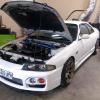Mr30 Auto To Manual Conversion
Announcements
-
Similar Content
-
Latest Posts
-
It's innocent. But sometimes people cannot start their cars or change gears because they have a billion stick-on things getting in the way. Yeah, i'm not a shiny thing kind of guy but I'd definitely give this a go. Food for thought. Thanks
-
I am so glad I've been stepping away from the internet more and more so I don't know what "Just Rolled In" is. And no, I'm not googling it, or clicking any links you lot provide. Second, Prank, pretty much, that silver stuff, wrap all of one section in a new colour. I recommend NOT using anything glossy, go for matte or flat colours. Current work car I'm driving has so many shiney chrome bits and gloss black bits that at certain points of the day I feel it would be easier to drive blind... So much glare in the eyes!
-
You might as well just vagazzle it, like the dumb bitches on Just Rolled In.
-
I thought not. R32s certainly weren't. R33s definitely could have been, but I thought they had much the same gear in them as the 32s. I could be wrong. I had my r32 converted to R143A before I put the Neo motor (and its R34 compressor) into it. So I didn't even really consider the original refrigerant for the 34's compressor. Seeing as the very idea of "conversion" means that it doesn't really matter anyway. What it would really come down to, in the car in question, is what ports are on the lines and if they are R12 or R143A ports. And the little bit of work required to convert them and clean the system out of the old juice.








Recommended Posts
Create an account or sign in to comment
You need to be a member in order to leave a comment
Create an account
Sign up for a new account in our community. It's easy!
Register a new accountSign in
Already have an account? Sign in here.
Sign In Now